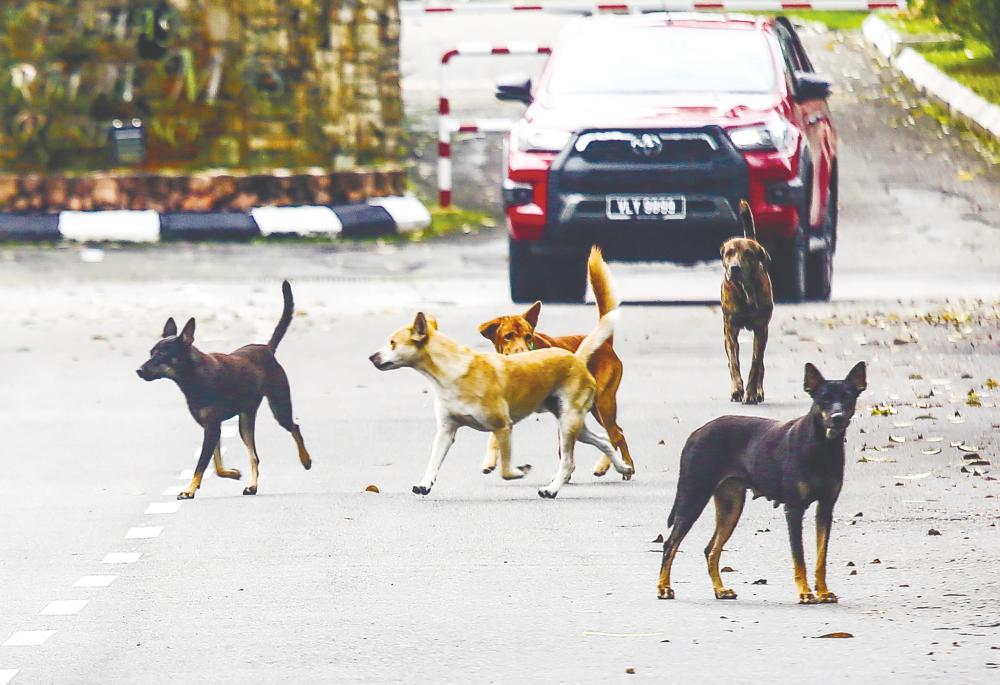PETALING JAYA: A senior veterinary officer has called
for a government-funded mass vaccination campaign to address the growing rabies threat, and for major corporations to collaborate with authorities to fund the procurement of sufficient rabies vaccines.
Universiti Putra Malaysia Faculty of Veterinary Medicine senior veterinary officer Dr Nor-Alimah Rahman was commenting on the 15,996 animal bite cases reported in Sarawak between Jan 1 and Nov 9, averaging 355 cases a week.
“Considering the irreversible outcome of rabies, vaccinations should be made compulsory for all dogs while mass vaccination of strays and control of the stray population should be (among other steps) to ensure preventive measures are successful.
“Controlling rabies requires a multi-faceted approach that involves various authorities, media management, animal vaccination, public health initiatives, community education and infrastructure improvements.”
She said targets should be set to prioritise high vaccination rates in animal populations so that rabies could be effectively controlled.
Sarawak Health director Dr Veronica Lugah said since the rabies outbreak began in Sarawak in July 2017, there have been 82 cases due to complications caused by the disease, including seven this year that resulted in death.
A research journal, titled “Rabies epidemiology in Malaysia (2015–2023): A cross-sectional insight and strategies for control”, reported that rabies transmissions through dogs accounted for 89.53% of cases.
It said human rabies fatality rates continue to rise and are at 90.28%, yet vaccination coverage remains at just 16.66%.
Nor-Alimah said a huge infusion of funds into immediate control efforts, followed by eradication of infection sources, especially infected dogs, is required.
“Priority for mass vaccination of domestic animals and a dog vaccination campaign with a target of at least 70% of its population plays a critical role in interrupting the transmission cycle.
“Capture-vaccinate-release programmes could lower the risk of rabies in the stray animal population but the effectiveness may vary. Achieving high vaccination rates in animal populations remains key to controlling rabies, alleviating the strain on public health systems and saving lives.”
She said achieving adequate rabies vaccination coverage in dogs, particularly in Sarawak, is challenging due to difficult access to remote areas with high exposure to cases from neighbouring countries, cross-border migration of infected animals, and the smuggling of unvaccinated animals.
She said awareness and education about responsible pet ownership remains poor, especially in rural areas where vaccination is often viewed as optional and emotional attachment could
prevent owners from surrendering potentially infected pets until it is
too late.
“Public awareness of rabies as a zoonotic disease is also low as it is not a major cause of death in Malaysia. Many people are unaware of the its fatal nature, transmission pathways and its progression, leading to delays in case management.”
Nor-Alimah said law enforcement poses another hurdle because while rabies vaccination is mandated for imported animals, there are no restrictions on animal movement within Peninsular Malaysia, although Sarawak has made significant strides by requiring rabies vaccination and quarantine for dogs entering the state.
She said low vaccination rates hinder efforts to eradicate rabies, undermining the World Health Organisation’s goal to eliminate dog-mediated human rabies by 2030 and prolonging the persistence of the disease in endemic areas.
“Vaccination helps to protect animals, especially dogs. The higher the rate of rabies vaccination for dogs in Malaysia, the better the chances for us to protect them
and humans.”









